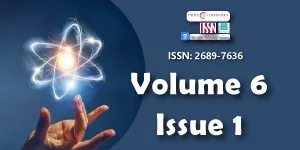Confirm that the imaginary number i is a closed field
Main Article Content
Abstract
In the History of mathematics of mankind, some strange symbols appeared when dealing with some mathematical problems, which were defined as imaginary numbers by mankind. The imaginary number has been idle for a long time since it was discovered. Later, mathematicians such as Gauss moved the imaginary number to the mathematical plane (Complex plane).
Humans have also learned the difference between imaginary and real numbers, and have obtained the difference between the two types of numbers on the square root.
My contribution is to discover the inconsistency between real and imaginary numbers.
I have discovered a new method of calculating imaginary number logic that is deeply hidden.
2020 Mathematics Subject Classification: 03G27, 03F07, 03D45, 11U09, 08A05, 08A40.
Downloads
Article Details
Copyright (c) 2023 Xie L.

This work is licensed under a Creative Commons Attribution 4.0 International License.
Licensing and protecting the author rights is the central aim and core of the publishing business. Peertechz dedicates itself in making it easier for people to share and build upon the work of others while maintaining consistency with the rules of copyright. Peertechz licensing terms are formulated to facilitate reuse of the manuscripts published in journals to take maximum advantage of Open Access publication and for the purpose of disseminating knowledge.
We support 'libre' open access, which defines Open Access in true terms as free of charge online access along with usage rights. The usage rights are granted through the use of specific Creative Commons license.
Peertechz accomplice with- [CC BY 4.0]
Explanation
'CC' stands for Creative Commons license. 'BY' symbolizes that users have provided attribution to the creator that the published manuscripts can be used or shared. This license allows for redistribution, commercial and non-commercial, as long as it is passed along unchanged and in whole, with credit to the author.
Please take in notification that Creative Commons user licenses are non-revocable. We recommend authors to check if their funding body requires a specific license.
With this license, the authors are allowed that after publishing with Peertechz, they can share their research by posting a free draft copy of their article to any repository or website.
'CC BY' license observance:
|
License Name |
Permission to read and download |
Permission to display in a repository |
Permission to translate |
Commercial uses of manuscript |
|
CC BY 4.0 |
Yes |
Yes |
Yes |
Yes |
The authors please note that Creative Commons license is focused on making creative works available for discovery and reuse. Creative Commons licenses provide an alternative to standard copyrights, allowing authors to specify ways that their works can be used without having to grant permission for each individual request. Others who want to reserve all of their rights under copyright law should not use CC licenses.
Whittaker ET. Peano axioms The Philosophy of Bertrand Russell. Books & Arts 03 Feb 1945. Nature, 155: 128-131.
Newcomb S. Modern mathematical thought. 1894; 49: 325-329.
Matthews G. The theory of imaginary numbers in geometry and the trigonometry of imaginary numbers. Books and art. 1920. Nature, 105: 736-737.
Richeson DS. Cardano formula. The Sordid Past of the Cubic Formula. JUNE 30, 2022. https://www.quantamagazine.org/search?q[s]=Cardano%20formula&q[cat]=&q[dates]=&q[tag ]=&q[author]=&q[taxonomy]=&q[post_type]=
Euclid's Elements of Geometry. Books & Arts 24 Oct 1901.Nature. 64: 623-624.
Chen MC, Wang C, Liu FM, Wang JW. Ruling Out Real-Valued Standard Formalism of Quantum Theory. Phys Rev Lett. 2022; 128: 040403. https://journals.aps.org/prl/abstract/10.1103/PhysRevLett.128.040403

